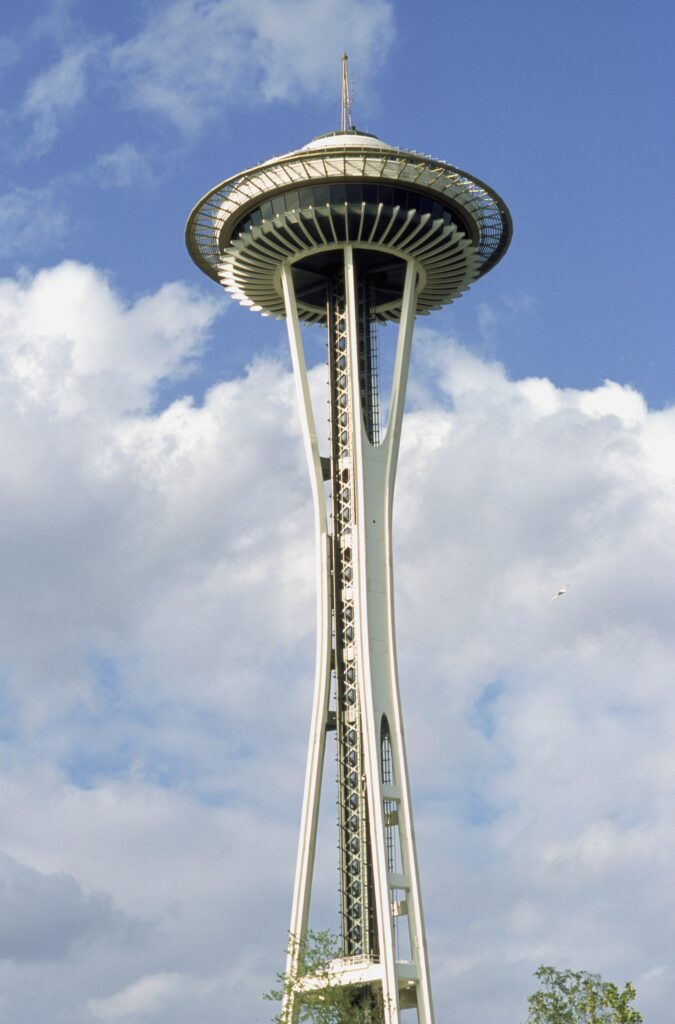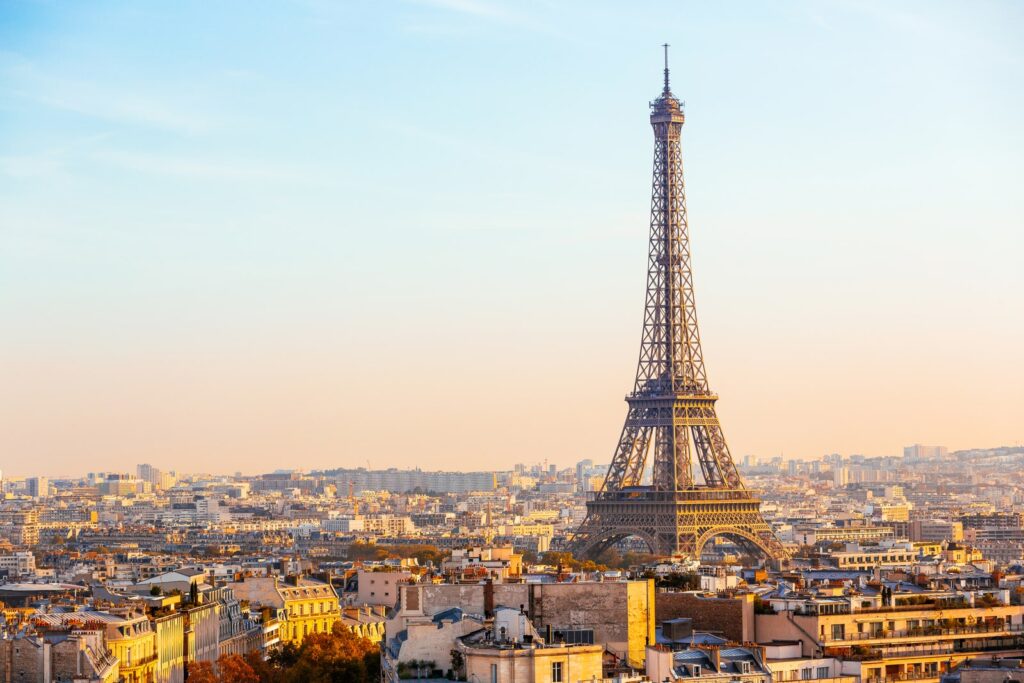In this article we shall extensively take a look at some of the top 10 iconic structures around the world, their country of existence and how their construction process took place.
Across the world, iconic structures serve as icons of their respective towns and nations and are a source of inspiration and creativity.
These buildings, which are both historical and contemporary, demonstrate the creativity and technical prowess of their designers and architects while providing an insight into the local customs and past.
These buildings are significant historically and culturally in addition to being visually appealing. You should think about going to a few prominent buildings in 2024 for an interesting and fulfilling experience.
10 iconic buildings around the world
10. The Sydney Opera House:

The Sydney Opera House, which was first opened in 1973, is a magnificent example of 20th-century architecture that combines several innovative and creative design elements in its structural and architectural shape.
The structure, a magnificent urban sculpture situated within a stunning waterscape at the point of a peninsula extending into Sydney Harbour, has had a lasting impact on architecture.
The Sydney Opera House is made up of three sets of interlocking vaulted “shells” that cover a restaurant and the two main performance halls.
Positioned atop an expansive platform, these shell-structures are encircled by terrace spaces serving as pedestrian concourses.
A completely new method of building was introduced in 1957 when Danish architect Jørn Utzon was chosen by an international jury to design the Sydney Opera House.
The building’s design deviated from typical constructing techniques, and its construction involved a whole new method of doing things.
Positioned on an expansive platform, the shell-structures are encircled by terrace areas that serve as pedestrian zones.
Architects, engineers, and builders worked together to design and construct the structure, and Utzon’s innovative concept and distinctive architecture style encouraged their inventiveness.
9. The Flatiron Building — New York City, USA

The flatiron building is Located at 175 Fifth Avenue in the Manhattan borough of New York City, the Flatiron Building—originally known as the Fuller Building—is regarded as a pioneering skyscraper. When it was finished in 1902, it was among the city’s highest structures.
The Flatiron Building, one of the most recognizable early steel skyscraper structures in the United States, was designed by Daniel Burnham.
The building’s moniker comes from its unique triangular structural composition.
The Flatiron District is the name given to the surrounding neighborhood in honor of the building that has come to symbolize New York City.
The structure received three designations: national historic landmark in 1989, national register of historic places addition in 1979, and landmark status in New York City in 1966.
Tenants have referred to the building’s interior as a “rabbit warren” of strangely shaped rooms due to its small and awkwardly formed office spaces.
The building was also known for having outdated heating and sprinkler systems, drafty wood-framed and copper-clad windows, and no central air conditioning.
The Flatiron Building was sold for $190 million in 2023 to a group of investors that included Jeff Gural, chairman of GFP Real Estate.
The structure will be transformed into opulent condominiums by the new owners, and construction and remodeling work should be finished in the upcoming years.
8. Taj Mahal — Agra, India:

In India, the Taj Mahal is a mosque, tomb, and place of worship for Muslims. The Mughal Emperor Shah Jahan constructed it in the seventeenth century as a memorial to his wife, Mumtaz Mahal. Ustad Ahmed Lahauri was its principal architect.
The structure is located in Agra, Uttar Pradesh. It is regarded by many as one of the world’s most exquisite structures. It is among the most popular tourist destinations in India.
The Taj Mahal and the 2.5-kilometer-distance Agra Fort are both recognized as UNESCO World Heritage Sites. on 2007, it was included on the list of the Seven Wonders of the World. It is located in Agra on the Yamuna River’s southern bank.
Originally, the structure was white. Air pollution is causing it to turn yellow. The atmosphere’s sulfur dioxide combines with water molecules to form sulfuric acid, which gradually erodes the building’s exterior.
One of the most famous examples of Islamic architecture ever constructed is the Taj Mahal. With the exception of the South, the Mughal Empire ruled over most of India at the time it was constructed.
Mughal monarch Shah Jahan ascended to the throne circa 1628. Historians claim that Shah Jahan’s passion for construction and architecture earned him the moniker “The Builder Of Marvels.” The Taj Mahal, often known as the “Jewel of the palace,” was constructed for Mumtaz Mahal, Shah Jahan’s third wife.
After giving birth to their fourteenth child, she fell unwell. She begged Shah Jahan to create the most exquisite mausoleum ever constructed just before she passed away. June 17, 1631 was her death date.
The Taj Mahal had 2 million visitors in 2001. In 2014-2017 there were more than 7-8 million visitors.
7. Metropolitan Cathedral of Brasília — Brasília, Brazil:

The Cathedral of Brasília, designed by the renowned Brazilian architect Oscar Niemeyer, is a hyperbolic edifice that resembles a crown and seems to be pinned to the earth.
Both the building’s history and its unique shape and stunning stained glass ceiling are fascinating.
In September 1958, the Cathedral of Brasília’s cornerstone was set. Two years later the cathedral’s main frame was finished, but just like many building projects in Brasília at the time, it came to an abrupt stop.
Completed and dedicated on May 31, 1970, it is renowned for its spectacular exterior, which includes a 20-meter-tall bell tower with four enormous bells donated by Spanish citizens of Brazil, and four bronze sculptures at the entry that represent the four Evangelists.
The cathedral is a well-liked travel destination that brings in millions of tourists a year.
Large-scale repairs and updates to the building’s infrastructure, as well as addressing roof-related issues, were started in 2012. It is anticipated that the renovations will be finished in 2022.
6. Space Needle — Seattle, Washington, USA:

This famous landmark and observation tower, which is situated in the Lower Queen Anne area, was constructed for the 1962 World’s Fair.
Pre-purchasing a timed ticket ensures a seamless experience.
Built to resist winds of up to 200 mph and earthquakes of up to 9.0 magnitude, it is 605 feet tall.
At 520 feet above sea level, the Space Needle’s observation deck offers sweeping views of Elliott Bay, the Olympic and Cascade Mountains, Mount Rainier, Mount Baker, the downtown Seattle skyline, and numerous Puget Sound islands.
The tower weights 9,550 short tons and has a width of 138 feet. A compromise between the designs of Edward E. Carlson and John Graham Jr. produced the architecture of the Space Needle.
5.The Lotus Temple — New Delhi, India:

The Baha’i House of Worship, often referred to as the Lotus Temple, is one of the most visited religious structures in the world in addition to being a monument to the brilliance of contemporary Indian architecture.
All races, religions, and castes are welcome to worship at the Temple, which is situated on a 9.7-hectare plot of land close to Nehru Place in South Delhi.
This House of Worship is shaped like a lotus flower, which is revered by the majority of Indians.
It is intended to serve as a symbol of the oneness of all people and religions and to capture the simplicity, clarity, and vitality of the Baha’i Faith.
The building embodies effective ventilation and cooling techniques. Fresh air, cooled as it passes over the fountains and pools, is drawn in through openings in the basement up into the central hall and expelled through a vent at the top of the structure.
4.The Colosseum — Rome, Italy:

The Colosseum is an oval-shaped building that is 50 meters high, 156 meters wide, and 189 meters long. It is constructed of concrete and sand, and it can hold up to 50,000 spectators.
The Doric, Ionic, and Corinthian orders of columns adorn each of the three floors of arches that make up the Colosseum’s exterior wall.
The arena, the cavea, and the podium make up the three sections of the Colosseum’s interior. Gladiatorial matches and other public events were held at the arena.
The podium is an elevated platform designated for the emperor and other dignitaries, while the cavea serves as the seating space for onlookers.
Numerous public events, such as animal hunts, mock sea wars, and gladiatorial competitions, were held at the Colosseum. Gladiators were people who fought to the death in front of adoring audiences; they were frequently slaves, criminals, or prisoners of war.
Exotic creatures like lions, tigers, and elephants were hunted and slain in arenas during animal hunts.
Over the ages, the Colosseum has required multiple renovations to repair damage caused by weathering, fires, and earthquakes. With millions of tourists annually, it is currently one of Rome’s most well-liked tourist destinations.
In addition to learning about the history of this famous building, visitors can explore the Colosseum’s interior, which includes the arena, cavea, and podium.
3. Acropolis of Athens — Athens, Greece:

The Acropolis of Athens is the most famous acropolis. In the heart of Athens, this sizable hill is home to the Parthenon and other Greek structures. Many refer to it as The Acropolis.
Athens, Greece’s Acropolis is a collection of historic temples perched atop a precipitous slope. In Greek, the word “acropolis” even means “high city.”
Although there are acropolises in other cities as well, the Athens acropolis is the most well-known.
The most impressive and comprehensive ancient Greek colossal complex that is still standing today is the Acropolis in Athens. It is located on an average-height hill (156 meters) that rises within the Athens basin. Its overall measurements are roughly 170 by 350 meters.
In the event that the city was invaded, inhabitants could flee to the buildings, which served as a citadel. By 580 B.C., the Acropolis had been largely demolished.
Athenians had no intention of rebuilding it. But Themistocles and Pericles convinced them to rebuild it a century later.
The Acropolis served as a fortification, a residence for monarchs, a religious hub, a fabled home for the gods, and a popular tourist destination over the ages. It continues to remain as a reminder of Greece’s rich past despite having endured vandalism, severe earthquakes, and bombardment.
2.The Pyramids of Giza — Giza, Egypt:

The three enormous pyramids that make up the Pyramids of Giza are situated in Giza, Egypt, not far from Cairo. These were constructed in antiquity as ornate tombs to accommodate its pharaohs.
Constructed in 2600 BC, the Great Pyramid of Giza is the most renowned and largest of the pyramids. It functioned as the pharaoh Khufu’s tomb.
The oldest of the Seven Wonders of the Ancient World, the pyramid stood as the highest man-made building on Earth for more than 3,800 years.
In addition to their size and age, the Giza Pyramids are renowned for their exact architectural design and alignment with celestial bodies.
The Great Pyramid’s sides line up with the compass’s cardinal points, and it’s thought that the structure served as an astronomical observatory because some passageways and chambers line up with particular constellations and stars.
Even though the Pyramids of Giza were built over 4500 years ago, the stones were placed so precisely that there are almost no gaps between them.
Scholars have been puzzled by the construction of the Giza Pyramids for centuries.
For archaeologists, the precise methods used to move the stones up the building are still unknown.
It is known, nevertheless, that competent architects and government officials who received compensation for their work instead of slaves constructed the pyramids.
The Pyramids of Giza are a well-liked tourist site and a representation of Egypt’s rich history and culture. Millions of tourists visit them every year as they are a part of the “Memphis and its Necropolis” UNESCO World Heritage Site.
People all throughout the world are still in awe and wonder of the pyramids, which are a monument to the creativity and mastery of the ancient Egyptians.
1. Eiffel Tower — Paris, France:

The Eiffel Tower is a world-famous landmark, a wrought-iron tower located in Paris.
It is also a technological marvel in the annals of building architecture. Gustave Eiffel designed and oversaw its construction (1887–1889), and it bears his name.
It Originally designed to be a temporary structure, the Eiffel Tower was saved by creative and profitable applications, including housing a military telegraph station in 1903, a meteorological station in 1890, and an aerodynamics laboratory in 1909.
Additionally, it was utilized for television transmission, which increased its height by almost 20 meters (66 feet).
The tower receives almost seven million visitors annually, making it a popular attraction.
It has a museum, a number of dining options, and the Gustave Eiffel Reception Room, which can accommodate social functions, business conferences, expositions, and cultural events.
A wonderful view of Paris is also available from the tower, which is 276 meters (906 ft) high.
Arguably the most well-liked paid attraction on earth is the Eiffel Tower. Every year, almost seven million people visit it.
The tower houses a museum, a number of dining establishments, and the Gustave Eiffel Reception Room, which can accommodate social parties, business conferences, expositions, and cultural events.
Also, the tower has a number of restaurants and retail establishments. Situated directly beneath the antenna, at a height of 276 meters (906 ft), is an observation deck.




As a Newbie, I am always browsing online for articles that can be of assistance to me. Thank you
welcome
It’s a pity you don’t have a donate button! I’d without a doubt donate to this outstanding blog! I guess for now i’ll settle for bookmarking and adding your RSS feed to my Google account. I look forward to new updates and will share this website with my Facebook group. Chat soon!